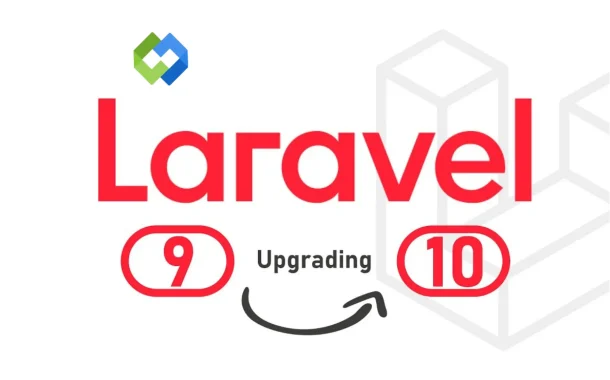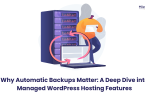Additionally, upgrading helps you avoid security risks. As older versions receive less attention, they become more vulnerable to bugs and attacks. Laravel 10 supports the latest versions of PHP, so you get access to new functionalities and optimizations. It also includes long-term support, ensuring your app remains stable and receives updates for years.
Table of Contents
Table of Contents
Updating Composer Dependencies
1. Modify composer.json File
Open your composer.json file and change the Laravel version reference from 9 to 10 in the dependencies section. This ensures that Composer will install the correct version of Laravel. Check other dependencies in the file to ensure they are compatible with Laravel 10. You may need to update or adjust specific packages that require newer versions to work properly with Laravel 10.
2. Run Composer Update
After updating the composer.json file, run the composer update command. This command will fetch the latest versions of the packages defined in your file and install them. Keep an eye on any warnings or errors during the update process. If there are issues, they might point to incompatibilities or missing package versions that need to be addressed.
3. Resolve Package Compatibility
After updating, some packages may not be fully compatible with Laravel 10. If that happens, check the package documentation for any required changes. You may need to update or replace certain packages to match the new Laravel version. Consider using the Laravel-specific packages or check for newer releases from the package authors to ensure compatibility.
Update Environment Configuration
Update .env File
The .env file stores your application’s environment settings. After upgrading to Laravel 10, review and update the values in your .env file to match any changes or new configurations introduced by Laravel 10. Pay special attention to database, cache, queue, and mail settings. Laravel 10 may introduce new configuration options or deprecate old ones, so ensure everything is correctly set up for the new version.
Check Configuration Files
After updating the .env file, verify that any new configuration files in the config directory are set up properly. Laravel 10 may include new defaults or options that need to be manually added or adjusted to fit your application’s needs. Run php artisan config:clear to refresh the configuration cache, ensuring that the application uses the latest settings from the .env and configuration files.
Updating Codebase for Compatibility
Check for Deprecated Features
Laravel 10 may have removed or changed some features that were available in Laravel 9. Review the official Laravel 10 upgrade guide to identify deprecated features. Update or refactor any code that relies on deprecated features to ensure compatibility with Laravel 10. This step helps avoid potential issues as Laravel 9 features are phased out.
Update Routes and Controllers
Review your application’s routes and controllers. Laravel 10 might have introduced changes in routing syntax or controller methods. Ensure all routes are correctly defined and controllers are updated to reflect any new methods or changes in how routes are handled in Laravel 10. Adjust any middleware or route groups as necessary.
Review Package Compatibility
Some of the packages you’re using may need updates to be compatible with Laravel 10. Check the package documentation for any Laravel 10-specific changes or versions. You may need to update or replace certain packages that are no longer maintained or supported in the new version of Laravel. Ensure all dependencies are compatible to avoid issues with your application.
Testing the Application
Run Automated Tests
After updating your codebase, it’s important to run your existing automated tests to ensure everything works as expected. Use PHPUnit or any testing framework you’re using to verify that the upgrade hasn’t broken any functionality. Make sure to check for any failed tests, especially those related to Laravel-specific changes. Address any issues or errors that arise and rerun the tests until they pass.
Manual Testing and Debugging
In addition to automated tests, perform manual testing to check the user interface, features, and functionality. Manually test key areas of your application, such as login, data submission, and payment systems. Use Laravel’s built-in debugging tools like dd() and log() to troubleshoot any unexpected issues. Monitor logs for errors or warnings that could point to problems with the upgrade.
Handling Migration Issues
Database Migration Changes
Laravel 10 may introduce changes to database migrations. Review the upgrade guide for any new migration methods or changes to existing ones. If your application has any database migrations that rely on older Laravel features, you may need to update them. Ensure that the schema and data types are compatible with the new Laravel version.
Schema Changes in Laravel 10
Laravel 10 might introduce new database schema features or optimizations. Make sure your application’s database schema aligns with these changes. Run the php artisan migrate command after making the necessary updates to your migration files. This will apply any changes to the database structure and ensure that your application’s data is correctly migrated to the new version.
Post-Upgrade Tasks
Update Documentation
After upgrading, it’s essential to update your application’s documentation to reflect any changes introduced by Laravel 10. This includes any new features, changes in configuration, or updates to routes and controllers. Ensure that your development team is aware of the changes and how they may impact the workflow. Documentation should also include details on any new dependencies or tools added during the upgrade.
Verify Performance
Once the upgrade is complete, thoroughly test the performance of your application. Check for any slowdowns or performance issues that may have arisen due to the upgrade. Use tools like Laravel Debugbar or other profiling tools to measure the application’s performance. If needed, optimize your code or configurations to maintain or improve performance with Laravel 10.
Conclusion
Upgrading from Laravel 9 to Laravel 10 is a simple process if done step by step. You need to update Composer dependencies, check your codebase for compatibility, and test the application carefully.
After the upgrade, remember to update your documentation and check your app’s performance. Run tests to catch any issues early. Upgrading to Laravel 10 will improve your app’s performance, security, and long-term support, ensuring it stays up-to-date with the latest features.














